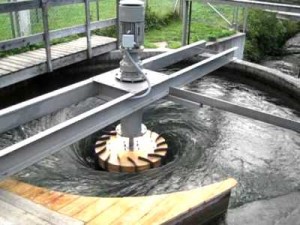 Today, Myanmar has an electrification rate hovering just above 25%. In rural areas, where 40 million people reside, energy access drops to barely more than 15%.
Today, Myanmar has an electrification rate hovering just above 25%. In rural areas, where 40 million people reside, energy access drops to barely more than 15%.
Laos, for example, had an electrification rate hovering just above 30% in 2000. Nearly 70% of the population lives in rural areas. The Government of Laos put an emphasis on off-grid renewable energy expansion; more than 10,000 solar home systems were deployed and numerous village mini-grids utilizing solar, small-hydro and biomass energy sources were established. Today, after little more than a decade, more than 7 in 10 Laotians have access to electricity.
Fortunately, Myanmar is in an opportune position; all signs point to a robust energy transformation in the near future. The Government of Myanmar is, in principal, building the nation’s electricity infrastructure from the ground up, which opens up the opportunity to leverage lessons previously learned by other developing countries in similar situations.
How can Myanmar make a similarly impressive leap in energy provision? While on-grid electrification in Myanmar will likely come from large-scale hydropower, natural gas and coal-fired plants in the long-term, the case is strong for off-grid renewable energy solutions in the short-term, particularly because two-thirds of the population lives in rural areas. In contrast to comparatively slow-moving national grid extension, off-grid solutions – particularly village mini-grids – offer the opportunity for fast, flexible, expandable and cost-effective energy access.
While its population is only one-tenth that of Myanmar’s, Laos’s experience can act as an indicative case study for the Government of Myanmar as it develops its off-grid electrification strategy. Key takeaways include:
– Renewable energy mini-grid systems, compared with solar home systems, are longer-lasting, have greater “add-on” flexibility and can be easily connected once the national grid reaches a community.
– Closer consultation with end-users must take place in advance of the planning and design phases to ensure energy needs are met. Surveying individual user needs is critical to effectively reducing energy poverty.
– Hands-on training that empowers end-users with the skills and knowhow to properly maintain off-grid systems is a core element to ensure long-lasting, self-sustaining energy access. Using a community-based approach that provides training and direct income generation for local technicians, and helps create a local governance group (what we at Sunlabob call Village Energy Technicians and Village Energy Committees), Myanmar can use micro-entrepreneurship to simultaneously electrify the nation and help lift its people out of poverty.
– Energy efficiency education and implementation should be integrated into off-grid electrification programmes. The promotion of energy efficient technologies (i.e. lighting and appliances) and habits inevitably makes energy access more impactful and longer-lasting.
– Empowering the domestic private sector to be a key stakeholder in and driver of implementation is a critical aspect of successful, widespread off-grid electrification. Local businesses must be contributors to on-the-ground progress.
– Catalysing public-private partnerships to more efficiently maximize the resources of the public sector and on-the-ground expertise of the private sector is invaluable. Creative approaches, innovative financing and collaborative solutions are essential when trying to provide high-quality, long-lasting energy access to millions of people in some of the most remote, rural areas of the world.
President Thein Sein has explicitly stated that the government will take a “people-centred” approach to the country’s growth and development. If Myanmar is going to hold true to this promise, off-grid renewable energy needs to have a significant place in the national electrification strategy so that the 74% of the population currently without electricity (particularly those in rural areas), can begin to be lifted out of energy poverty in a timely and effective manner.
With smart planning, an ambitious approach and consideration of the lessons learned by Laos and its other developing neighbours, Myanmar can use off-grid renewable energy to begin making meaningful, long-lasting energy progress now.
Andy Schroeter, Co-Founder and Chief Executive Officer and Simon Henschel, Chief Operating Officer at Sunlabob Renewable Energy contributed to this report.
